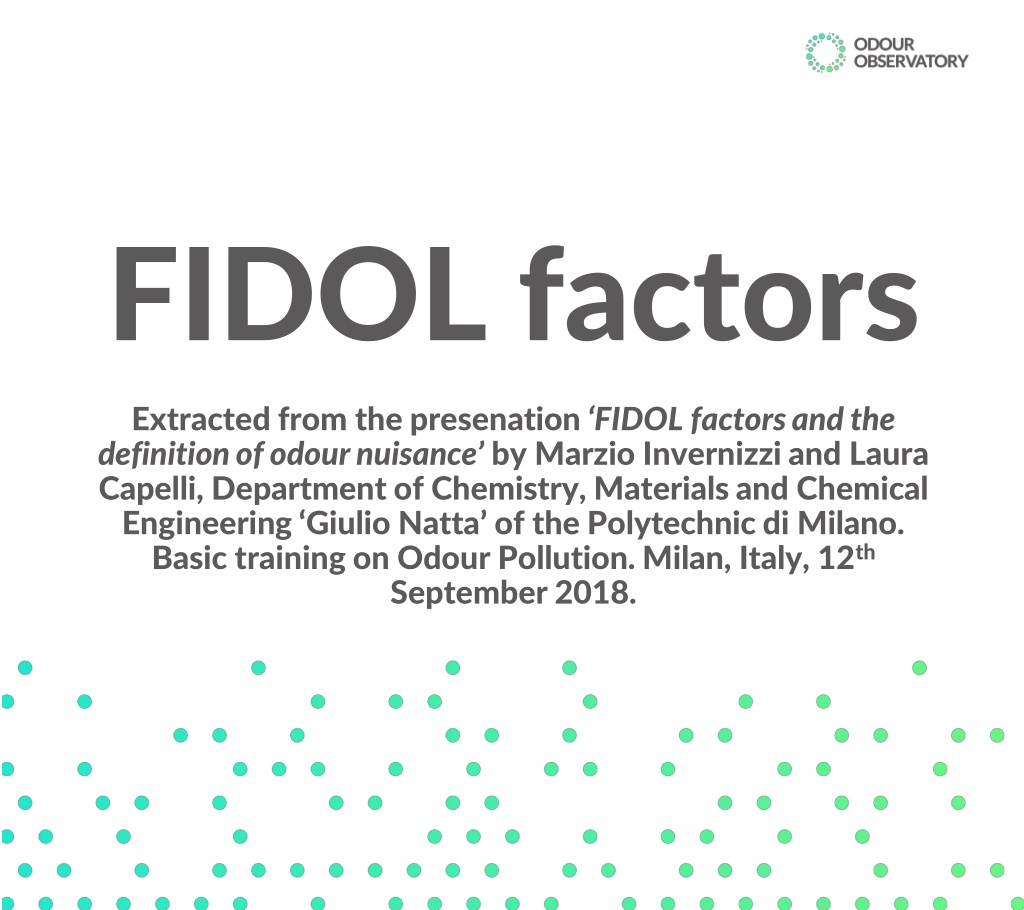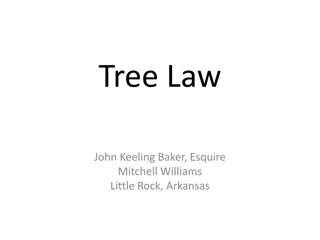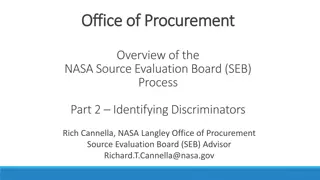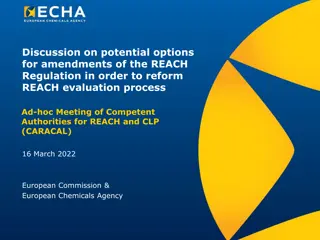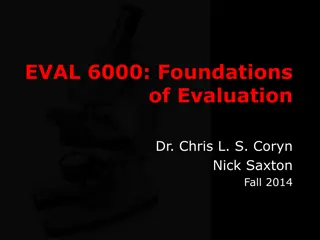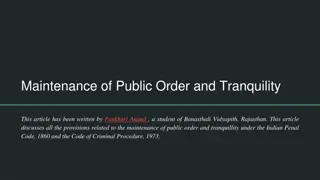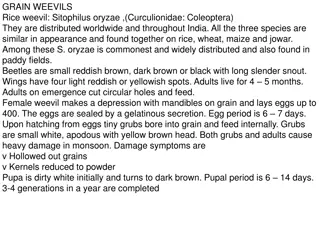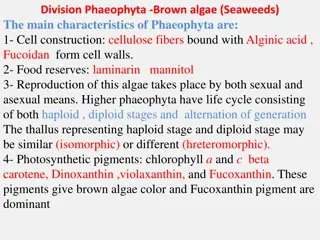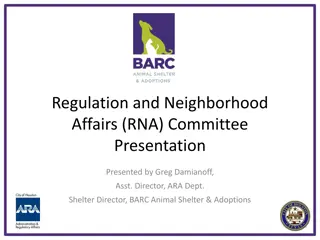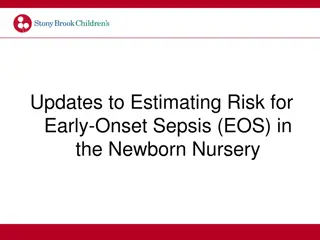Understanding FIDOL Factors in Odour Nuisance Evaluation
Factors extracted from a presentation by Marzio Invernizzi and Laura Capelli on odour nuisance include Frequency, Intensity, Duration, Offensiveness, and Location (FIDOL). Frequency of odour exposure is influenced by emission sources, weather conditions, and topography. Intensity is evaluated through perception thresholds, while duration and offensiveness impact the overall effect of odour episodes. Recognizing these factors is crucial for effective odour pollution management.
Download Presentation

Please find below an Image/Link to download the presentation.
The content on the website is provided AS IS for your information and personal use only. It may not be sold, licensed, or shared on other websites without obtaining consent from the author. Download presentation by click this link. If you encounter any issues during the download, it is possible that the publisher has removed the file from their server.
E N D
Presentation Transcript
FIDOL factors Extracted from the presenation FIDOL factors and the definition of odour nuisance by Marzio Invernizzi and Laura Capelli, Department of Chemistry, Materials and Chemical Engineering Giulio Natta of the Polytechnic di Milano. Basic training on Odour Pollution. Milan, Italy, 12th September 2018.
5 Frequency Intensity Duration Offensiveness Location FIDOL factors (Freeman & Cudmore, 2002; Nicell, 2009) Marzio Invernizzi and Laura Capelli, Department of Chemistry, Materials and Chemical Engineering Giulio Natta of the Polytechnic di Milano. Basic training on Odour Pollution. Milan, Italy, 12th September 2018.
Frequency It is a measure of how often an individual is exposed to an odour in environmental conditions. In general, a smell which occurs in the life of a person, will become more annoying with every episode of suffered odour. The frequency is influenced by the odour emission source, its relative position to the receptors, the weather conditions and the topography of the region. The frequency is generally greater in areas downwind from the source. Many jurisdictions have placed limits on the odour episodes frequency experienced outside of a property. The most common criteria assert that an industrial plant must comply with the limits of the intensity (concentration), with a frequency that can be 98%, 99%, 99.5% or 99.9% Marzio Invernizzi and Laura Capelli, Department of Chemistry, Materials and Chemical Engineering Giulio Natta of the Polytechnic di Milano. Basic training on Odour Pollution. Milan, Italy, 12th September 2018.
Intensity The individual response to an olfactory stress is directly related to the intensity with which it is lived. The most common approach for evaluating the intensity is based on the principle of dilution to the perception threshold (Nicell, 2009), and so on, which is based the dynamic olfactometry (EN13725), as the particular technology is called. Alternatively, the judgment of a panel can be used to describe the intensity, such as defined by the German standard VDI 3882 (Verein Deutscher Ingenieure, 1992), based on a scale from 0 to 6, with 0 representing the "imperceptible", and 6 representing "extremely strong." Marzio Invernizzi and Laura Capelli, Department of Chemistry, Materials and Chemical Engineering Giulio Natta of the Polytechnic di Milano. Basic training on Odour Pollution. Milan, Italy, 12th September 2018.
Duration It refers to the period of time in which an odour is felt. It is related to the type and position of the source area and the meteorology. The smell can be felt for short intermittent periods or long and continuous periods. In general, we can assume the more the duration is, the greater the impact. However there is no comprehensive study on the impact of the duration of a smell episode. Duration cannot be separated from the frequency and intensity. E.g. a smell warned for many short periods has a different effect than long continuous periods, even if the total amount of hours is equal. Likewise high-intensity exposure but for short periods do not have exactly the same impact of long low-intensity exposures. Marzio Invernizzi and Laura Capelli, Department of Chemistry, Materials and Chemical Engineering Giulio Natta of the Polytechnic di Milano. Basic training on Odour Pollution. Milan, Italy, 12th September 2018.
Offensive ness Hedonic tone The offensiveness or hedonic tone is the subjective evaluation of the pleasantness or unpleasantness of a smell. The Odour Threshold Value is a useful indicator about the power of an odour but it does not give any information about the nature of a smell. E.g. it is possible that the concentration of odour around a bakery and that around a wastewater treatment plant can be the same, but the level of nuisance is very likely to differ. The most common way to describe hedonic tone is by using a panel grading a sample from -4 to +4. Unpleasant sensations are marked with the sign - while positive ones by the sign + . The 0 is used to identify considered neutral odours (Dravnieks, Masurat, & Lamm, Hedonics of Odors and Odor Descriptors, 1984). Marzio Invernizzi and Laura Capelli, Department of Chemistry, Materials and Chemical Engineering Giulio Natta of the Polytechnic di Milano. Basic training on Odour Pollution. Milan, Italy, 12th September 2018.
Offensive ness Hedonic tone Environmental Agency, 2011 ODOUR TYPE FRESH BREAD COFFEE HAY RAW POTATOES PAINT NAPHTHALENE DISINFECTANT WET WOOL HEDONIC TONE 3.53 2.33 1.30 0.26 -0.75 -1.25 -1.60 -2.28 Marzio Invernizzi and Laura Capelli, Department of Chemistry, Materials and Chemical Engineering Giulio Natta of the Polytechnic di Milano. Basic training on Odour Pollution. Milan, Italy, 12th September 2018.
Location The place where an odour is warned is a very important parameter to assess the probability of a potential negative response from someone. The location factor should consider: - the type of activity carried out in that area, - the sensitivity of possible receptors and - the possible presence of background odours. In general, the degree of impact of a smell is directly linked to the expectation that individuals who live, work, visit or pass through a given area. E.g., an odour associated with agriculture or farming, is more likely to be tolerated in an area where it is expected that these activities are carried out as in the countryside. Marzio Invernizzi and Laura Capelli, Department of Chemistry, Materials and Chemical Engineering Giulio Natta of the Polytechnic di Milano. Basic training on Odour Pollution. Milan, Italy, 12th September 2018.
